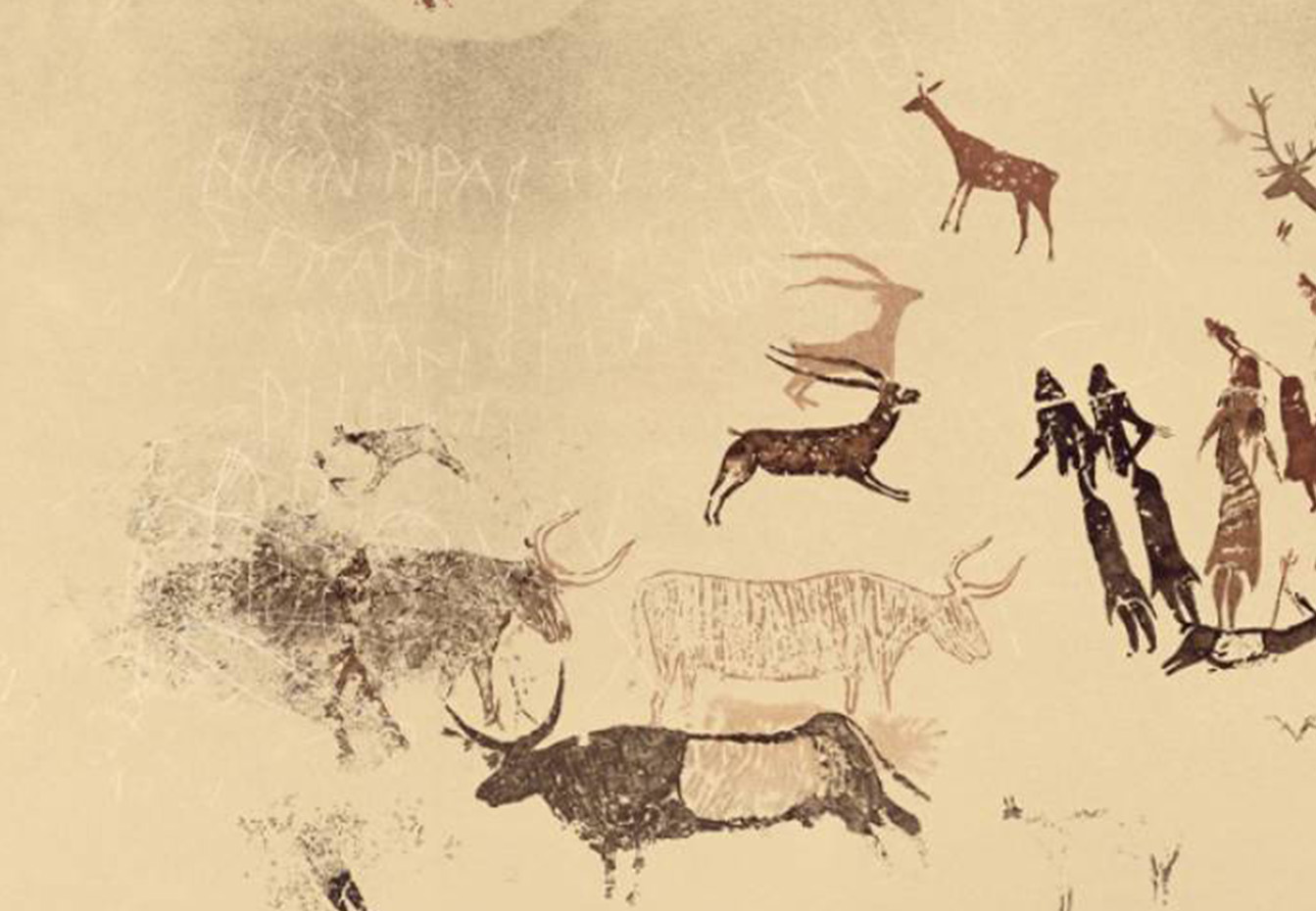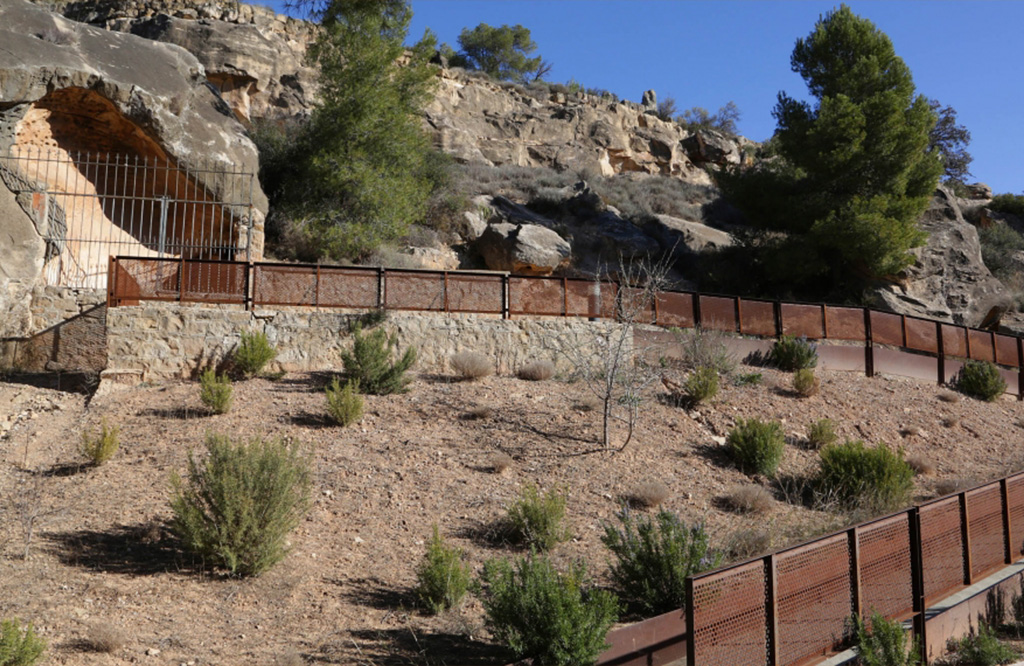
Located in the municipality of El Cogul, in the county of Les Garrigues. A large block of stone known as Roca dels Moros lies within the vicinity of the village, beside the Set River.
A rock mural of the same name is hidden there in a small, open-air, natural chamber located at the base of this rock.
The oldest figures on the rock are those of animals, having been engraved towards the end of the Palaeolithic or during the Epipalaeolithic. Some, such as this small leaping doe, have survived to the present day, while only a few traces of others have been conserved because of surface erosion.
These engravings originated in hunter-gatherer societies that lived off hunting wild animals and gathering wild fruits, roots and plants in their surroundings some 10,000 years ago. Goats, deer and bulls were part of the native fauna. These animals acquired great symbolic importance in the worldviews of the people who depicted them in the form of engravings of incredible plasticity and movement.
These animal figures acquired form and colour over the passage of time. Figures painted with brushes made from hair, plant fibres and feathers appeared and experimentation with forms and techniques began. The group of bulls presents us with a narrative art that creates visual stories through scenes.
Levantine art takes its name from the geographical area where it is located: the Levantine peninsula. It is a predominantly open-air painted art, in rock shelters (or caves) and vertical walls. Unlike Palaeolithic art, Levantine art is not found on other movable art surfaces, such as bones and horns, and this makes it difficult to date. Although debate has been raging for a hundred years, no consensus has been reached on the authorship of these paintings. There is a theory according to which their origin would be situated in the traditions of the last hunter-gatherer peoples from the Epipalaeolithic and Mesolithic, between 10,000 and 7,000 years ago, and extending up to the Neolithic period, while another theory views them as representations of the first communities of farmers and stockbreeders rooted from the outset in the Neolithic.
It could be a representation of some ceremony or ritual commemorating a special life cycle occasion.
In the latter,human and zoomorphic figures were simplified and assumed schematic, abstract forms.
Schematic art is on display in the stag-hunting scene. An archer draws his bow and is about to shoot a stag, while another lies dead a little further on. The figures are painted with thick strokes made with the fingers or else a broad brush.
The Neolithic represented a technological, economic and social revolution in addition to a whole new way of life because of the introduction of agriculture and animal husbandry. Walls and stones were not the only medium for artistic expression, as pottery also appeared for the first time. This fact allows us to date schematic paintings in time, between 7,000 and 3,000 years ago, while in the case of El Cogul, the parallels with ceramics bring us closer to the Bronze Age.
The variety of cultural motifs and manifestations in the mural bring the prehistoric period to life as a world in continuous transformation, bearing witness to the transmission of culture throughout the centuries.
Roca dels Moros was a sacred space for ancient societies and continues to be a heritage site of exceptional cultural value today, a source of knowledge and research into the societies that have left their mark there.

